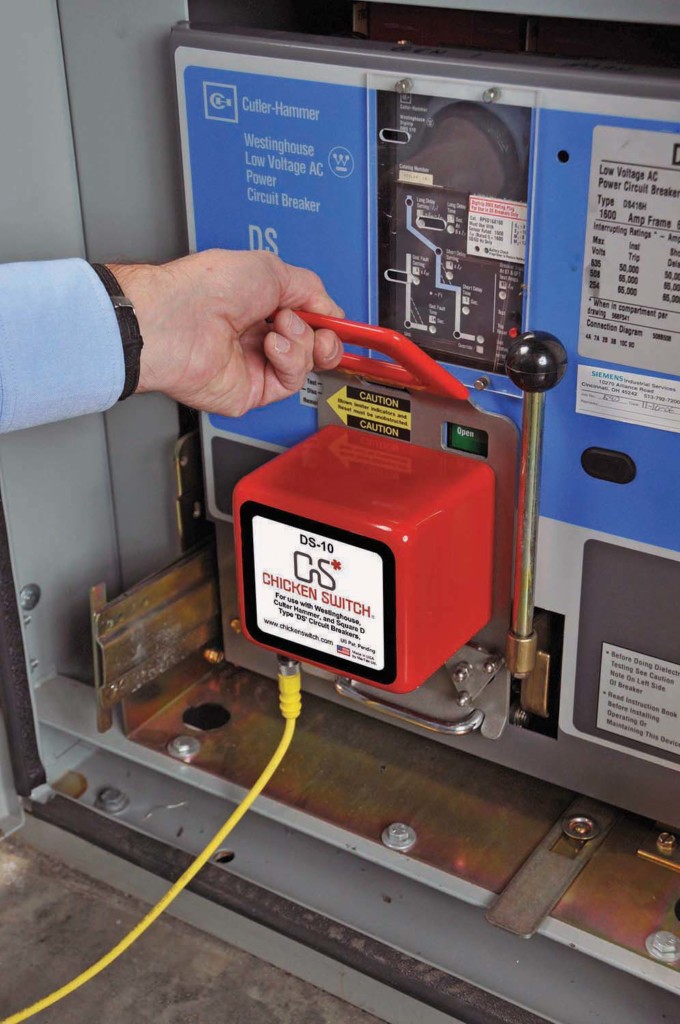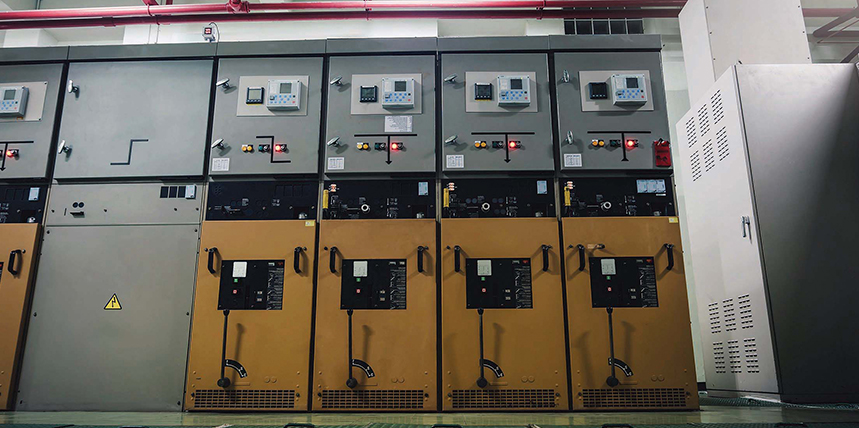Returning electrical equipment to service after a planned maintenance outage creates a unique set of hazards. Facility managers are under stringent time constraints when taking a system out of service, performing necessary maintenance tasks (as well as making unanticipated repairs), and returning the system to service. Common, real-world factors may place workers at great risk as the system is returned to service. This article identifies those factors and presents logical and practical ways to decrease or eliminate risks.
It’s All a Setup with Good Intentions
Most well-run, progressive companies readily accept that their electrical distribution system is fundamental to the operation of their facilities. Maintaining electrical equipment is thus not an option — it is a must, not merely from an operational-continuity perspective, but also from a loss-prevention perspective. Delaying the restart of a manufacturing process after a planned maintenance outage because of schedule creep or scope creep can be costly. Extended outages caused by major equipment failure can be devastating.
As important as these economic factors are, preventing a life-altering injury or death trumps all economic incentives. Few would disagree that protecting people is also a form of loss prevention. Aside from an employer’s moral responsibility to protect its workers, failure to adequately protect people can result in significant economic losses in the form of OSHA fines, medical payments, higher workers’ compensation premiums, and litigation.
Electrical maintenance outages are stressful for everyone concerned. The plant manager just wants it to be over so operations can return to normal as soon as possible. The electrical distribution engineer wants the greatest amount of work possible done in the allotted time to ensure he never has to answer to the plant manager for an unplanned outage. The maintenance crew wants to be thorough and do a good job, but they also know the criteria for deeming a job well done: returning the system to operation on time, with just enough bad news about the condition of the equipment to justify the expense of the outage, but not so much bad news that a restart is delayed or significant repairs are necessary.
All these real-world pressures and competing objectives can produce a high-risk situation when the time comes to re-energize an electrical system following a planned maintenance outage.
Risk Scenarios
Risk-creating scenarios fall into three major categories.
Equipment Deficiencies
Although the objective of a maintenance outage is to extend the life of the equipment and promote safe and reliable operation, the opposite is sometimes the outcome. Humans perform maintenance tasks. Humans make mistakes. Even the best technicians become distracted and fatigued.
Recently, a facility owned by a Fortune 500 company experienced a serious arc blast event because a blown current-limiter sensing wire was left disconnected on one end. When the breaker was returned to service, the lead contacted a grounded surface and an arc blast ensued.
But not all equipment deficiencies in this realm are caused by careless acts. Particularly in older facilities, experience has shown dated medium-voltage cables frequently fail upon re-energization after being de-energized for several hours. Several mechanisms can cause this failure. Water absorption through insulation treeing and thermal cycling is perhaps the most common.
Tools Left Behind
Leaving a tool behind in an area where it could initiate a fault is not uncommon. Even surgeons, some of humanity’s brightest, most-educated, and best-trained individuals, sometimes make similar mistakes.
In electrical equipment, a left-behind tool may not immediately present a problem. It may take the jarring of a breaker operation to dislodge the tool from its resting place into a position where it creates a fault. Keep in mind: It’s not only good operating practice to inspect for tools and such before re-energizing — it’s the law. Still, despite workers’ best efforts, mistakes occur.
Tyranny of the Urgent
During a planned maintenance outage, the tyranny of the urgent is ever present. This may include the rush to complete maintenance testing, quick evaluation of test results, foregoing some maintenance activities to meet the appointed time for re-energizing, and the temptation to cut corners. The list goes on and on.
In the end, one is left wondering: Was some key piece of information misinterpreted? Was the insulation resistance too low to re-energize? Can the equipment be safely returned to service?
According to OSHA 1910.333(b)(2)(v)(A):
A qualified person shall conduct tests and visual inspections, as necessary, to verify that all tools, electrical jumpers, shorts, grounds, and other such devices have been removed, so that the circuits and equipment can be safely energized.
Mitigation
Communication is key. Hazards such as incident energy must be understood and quantified.
This begins with fostering a culture that does not tolerate risk-taking.
A well-conceived and well-written return-to-service plan is essential to avoiding mishaps. A person familiar with the facility and knowledgeable about its electrical systems and the associated hazards must perform such planning ahead of time. The plan should include a detailed sequence of operations for energizing the system. Responsibilities should be clearly assigned and understood.

A remote operator is an effective and economical means to protect workers by giving them a method to stay clear of arc flash hazard boundaries while performing electrical switching operations and racking.
An often-overlooked component of a return-to-service plan is contingency planning. Plans should take into account procurement of repair/replacement components, availability of supplemental skilled manpower, inclement weather contingencies, and the availability of temporary equipment such as compressors, pumps, and generators.
Solid return-to-service plans also utilize proper safety-related work practices. The plan should specify the appropriate personal protective equipment (PPE). When PPE is not sufficient, portable remote racking and control solutions are an alternative, as they mitigate not only the thermal effects of an arc blast, but also the hazards of shrapnel, vaporized metals, and flying debris.
Effective plans can also inventory and make workers aware of the safeguards already built into the facility, such as maintenance switches that temporarily lower breaker settings or permanently installed remote controls.
When it comes to operating discipline, avoid or minimize the time of closed-transition switching (temporarily paralleling two sources to supply a load from a different source without interrupting the load in the process). This situation may subject switchgear to a fault current that it cannot withstand or interrupt.
As a rule, inspect for foreign objects and stay clear when re-energizing. The law sums it up well:
- 1910.333(b)(2)(v): These requirements shall be met, in the order given, before circuits or equipment are reenergized, even temporarily.
- 1910.333(b)(2)(v)(A): A qualified person shall conduct tests and visual inspections, as necessary, to verify that all tools, electrical jumpers, shorts, grounds, and other such devices have been removed, so that the circuits and equipment can be safely energized.
- 1910.333(b)(2)(v)(B): Employees exposed to the hazards associated with reenergizing the circuit or equipment shall be warned to stay clear of circuits and equipment,
Conclusion
Returning electrical equipment to service is a potentially hazardous task, with risks increased due to time pressures. Equipment deficiencies, human error, time pressures, and poor judgment all increase the probability of an incident. Understanding these increased risk factors and having a good mitigation plan will go a long way toward reducing these risks.
 Charles Mark McClung began as an electrician apprentice with Union Carbide Corporation in 1974. After working 12 years as an electrician, he held various management and technical positions in plant maintenance and utility distribution. After a 35-year career, he took early retirement to devote his full attention to the development, manufacturing, and marketing of electrical safety devices. He founded Martek Limited, which was acquired by CBS ArcSafe in 2018.
Charles Mark McClung began as an electrician apprentice with Union Carbide Corporation in 1974. After working 12 years as an electrician, he held various management and technical positions in plant maintenance and utility distribution. After a 35-year career, he took early retirement to devote his full attention to the development, manufacturing, and marketing of electrical safety devices. He founded Martek Limited, which was acquired by CBS ArcSafe in 2018.
 Russell R. Safreed, PE, has been General Manager at CBS ArcSafe’s West Virginia location since CBS ArcSafe acquired MarTek Limited in 2018. Prior to this acquisition, Russ co-owned MarTek Limited, the company that invented the well-known remote pistol-grip switch actuator dubbed the Chicken Switch. Russ earned his BS in electrical engineering at the West Virginia Institute of Technology in 1987. He began his engineering career as a co-op student with Virginia Power in 1983 and has since gained a wide range of practical engineering experience with companies such as Union Carbide, Brown Electric, Aker Solutions, and DuPont. He has been responsible for the operation of power distribution systems ranging from 480 to 46,000 volts and has led the design of electrical projects for chemical manufacturing and power plants. He has held positions covering all facets of industrial electrical systems from designing substations and substation installation to the operation and maintenance of those stations. Today, he uses his skills and experience to lead the design of safety products used to remotely operate breakers outside the arc flash boundary.
Russell R. Safreed, PE, has been General Manager at CBS ArcSafe’s West Virginia location since CBS ArcSafe acquired MarTek Limited in 2018. Prior to this acquisition, Russ co-owned MarTek Limited, the company that invented the well-known remote pistol-grip switch actuator dubbed the Chicken Switch. Russ earned his BS in electrical engineering at the West Virginia Institute of Technology in 1987. He began his engineering career as a co-op student with Virginia Power in 1983 and has since gained a wide range of practical engineering experience with companies such as Union Carbide, Brown Electric, Aker Solutions, and DuPont. He has been responsible for the operation of power distribution systems ranging from 480 to 46,000 volts and has led the design of electrical projects for chemical manufacturing and power plants. He has held positions covering all facets of industrial electrical systems from designing substations and substation installation to the operation and maintenance of those stations. Today, he uses his skills and experience to lead the design of safety products used to remotely operate breakers outside the arc flash boundary.
